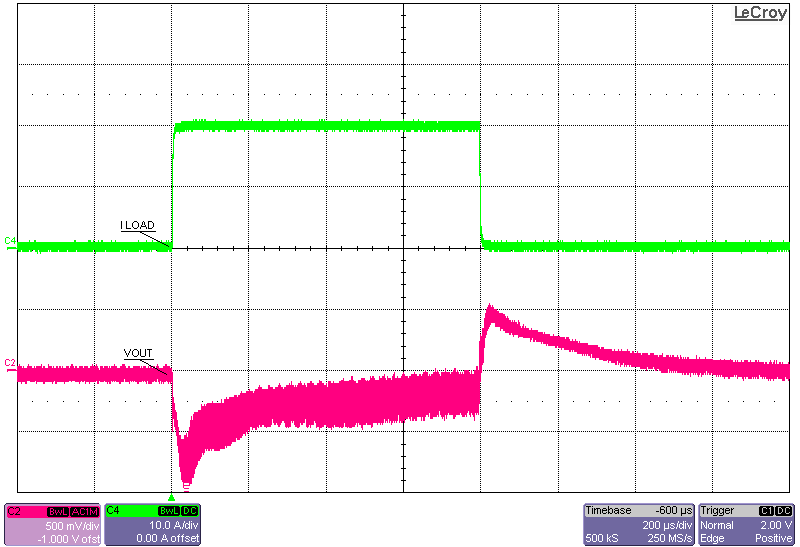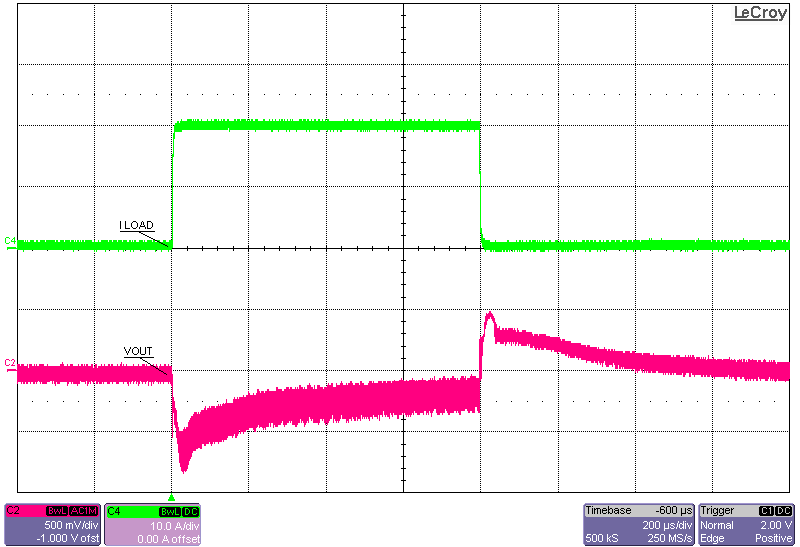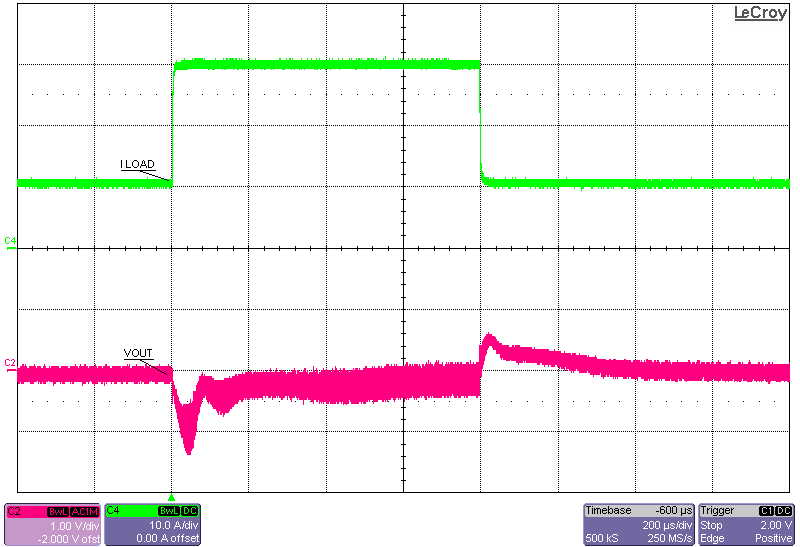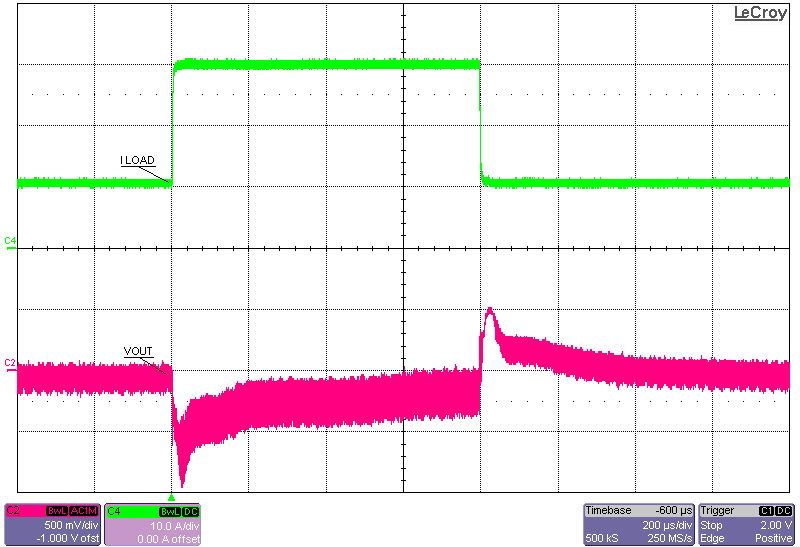TIDT299 September 2022
3.3 Load Transients
Load transient response is shown in the following figures.
 Figure 3-7 8-V Input, 0-A to 20-A
Load Step
Figure 3-7 8-V Input, 0-A to 20-A
Load Step Figure 3-9 10-V Input, 0-A to 20-A
Load Step
Figure 3-9 10-V Input, 0-A to 20-A
Load Step Figure 3-8 8-V Input, 10-A to 30-A
Load Step
Figure 3-8 8-V Input, 10-A to 30-A
Load Step Figure 3-10 10-V Input, 10-A to 30-A
Load Step
Figure 3-10 10-V Input, 10-A to 30-A
Load Step